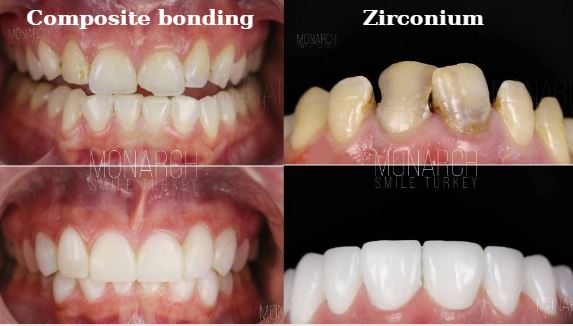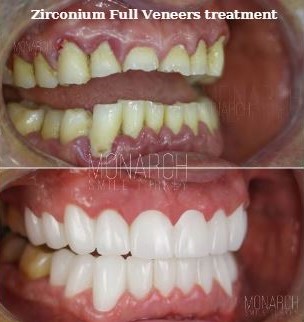Which is better, composite bonding or veneers?
The aim of composite bonding and dental veneers are to improve the appearance of teeth. In addition, these treatments are also used to close the gaps between the teeth, to eliminate tooth fractures and deformities, and to have the desired color by eliminating the discoloration of yellowing or darkening teeth. The procedure of both composite bonding and veneers are determined by your dentist, taking into account the needs and wishes of the patient.

Composite bonding is a procedure in which composite resin is applied to the tooth to shape it. Conversely, veneers, crafted from durable materials like composite, ceramic, porcelain, emax, and zircunium, adhere to the tooth's front surface in the shape of a shell. We will examine the differences between these two dental treatments under headings such as the material they are made of, their intended use, treatment time and cost.
Tooth preparation
Composite bonding and dental veneers treatments have different preparation times. In order for a dental veneer to be applied, the outermost layer of the tooth, which is called tooth enamel, must be removed (about 0.5 mm) by your dentist. Veneers are applied to the tooth after this layer is removed. In composite bonding, minimal preparation is needed. It will be sufficient to slightly roughen the tooth surface so that the resin can be properly bonded. In composite bonding, the tooth is minimally damaged, while in veneers, the enamel must be removed, which is an irreversible process.
Material
Composite bonding: In composite bonding, a tooth-colored resin is used. This resin is bonded to the tooth with special adhesives. This resin is the same material used in composite filling material. Minimal damage to your teeth is minimized, in most cases the material is bonded to the tooth without any abrasion of the tooth.
Dental veneers: Veneers are thin, custom-made shells made of porcelain, ceramic, composite, zircunium, or emax. These shells are extremely durable materials, specially produced in a dental laboratory. Zircunium veneers are made of zirconium, a white metal, and are more durable than metal and porcelain veneers. Emax veneer is a thin, transparent, and durable veneer made from lithium disilicate glass ceramic. Emax veneers are more transparent than zirconium veneers.

Composite Veneer
A composite veneer is a thin layer of tooth-colored resin material applied to the front surface of the teeth to improve and beautify the appearance of the teeth. It is cost-effective and minimally invasive compared to porcelain veneers, making it preferred as an alternative treatment. It is a quick solution method to correct discoloration, chips, gaps and minor misalignments. Composite veneers can be completed in a single dental visit but may require more maintenance over time and have a shorter lifespan than porcelain veneers.
Purpose
Composite bonding: Composite bonding is used to cover spaces between teeth, fix broken or cracked teeth, reshape teeth, or enhance the appearance of discoloured teeth. It is a more adaptable fix for small cosmetic problems.
Dental veneers: Veneers are mostly used in cosmetic dentistry to correct uneven, discolored, crooked, or worn teeth. Due to the materials they are made of, they provide more durable, permanent, and long-lasting solutions.
Durability
Composite bonding: Composite bonding is less resistant to stains such as coffee, tea, or tobacco than dental veneers and does not last as long as veneers.
Dental veneers: Veneers are highly resistant to staining and can be used for long periods of time without any problems if properly cared for.
Cost
Composite bonding: Composite bonding is much less expensive than veneers and therefore more economical. It is preferred as a faster, minimally invasive, and more cost-effective solution for minor dental problems.
Veneers: Veneers are more expensive due to both the special production process and the cost of the materials used. Since it involves the removal of a small amount of tooth enamel, it is an irreversible procedure.
After discussing your individual needs and desires in detail with your dentist, the treatment will be applied in line with the decision you will make, also considering the cost dimension.
Length of treatment
Composite bonding is a quick fix that can be finished in a single visit. For dental veneers, it takes at least two-three visits.
Which one to choose?
You can choose composite bonding if:
Minor cosmetic issues that you would like to have fixed include tiny spaces between your teeth, crooked teeth that you would like to straighten, and minor damage like chips and cracks.
You can choose dental veneers if:
Dental veneers are recommended for aesthetic purposes as well as when long-term durability and strength are desired against tooth decay, tooth fractures and deformities, and tooth stains.
- For more detailed information, please contact us or visit us at our dental clinic.
